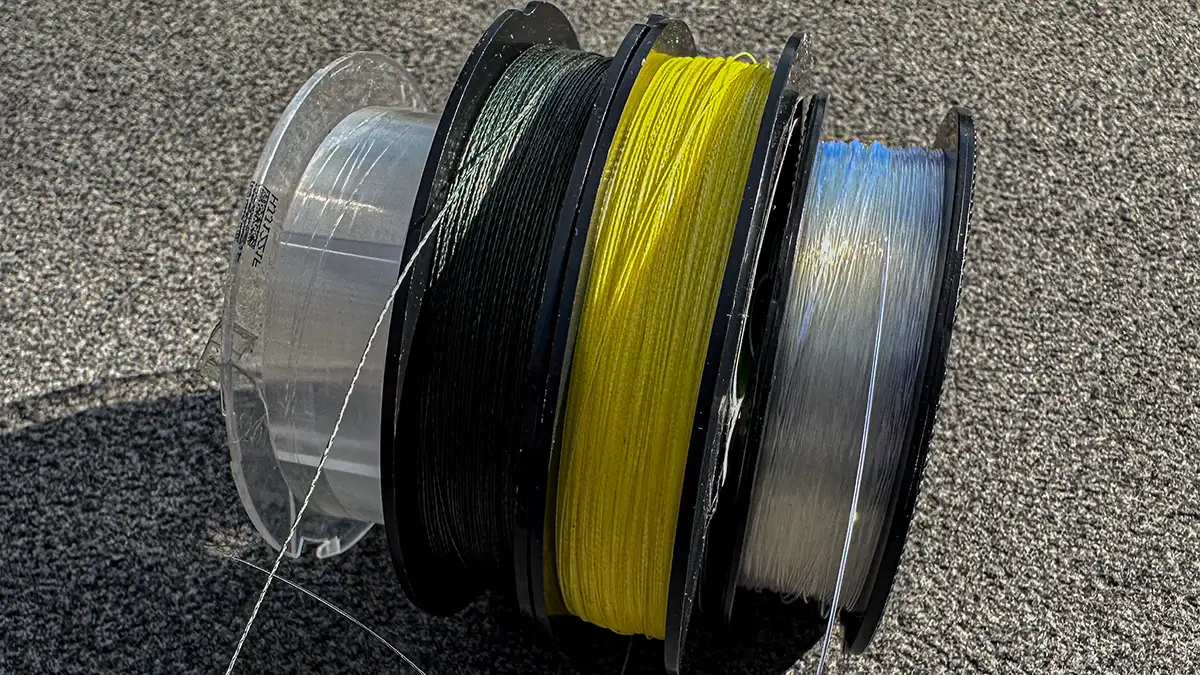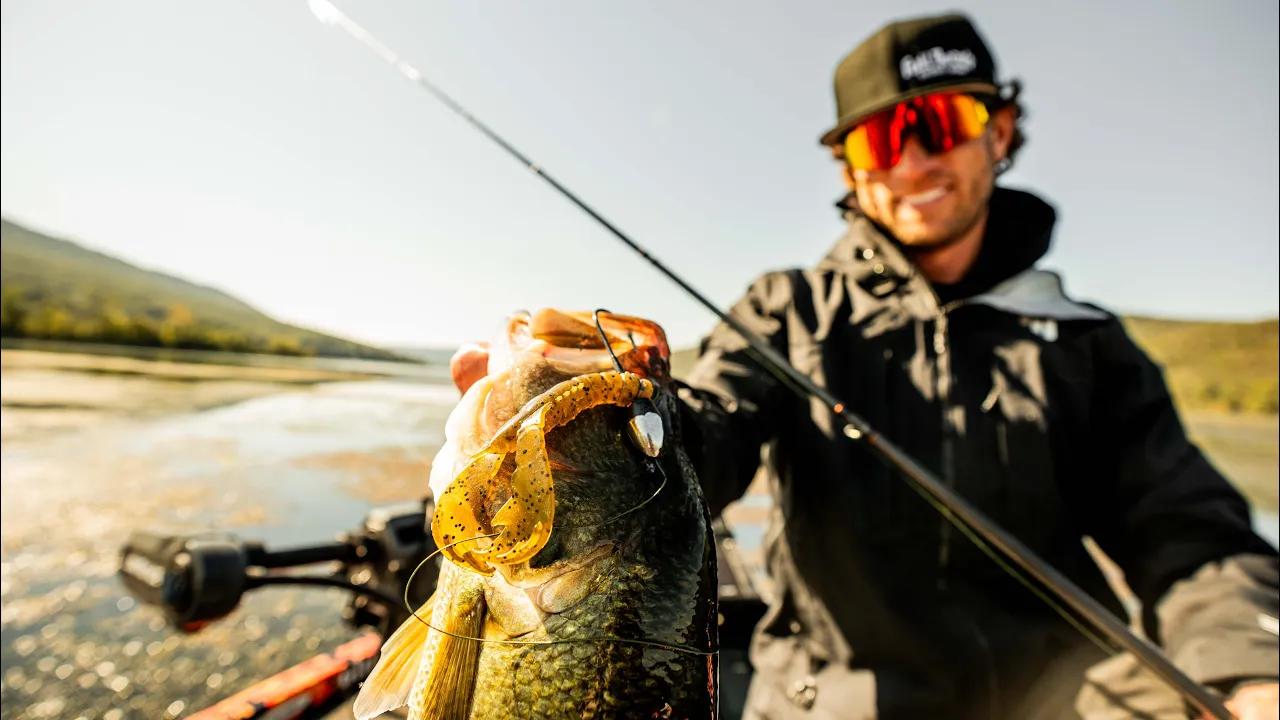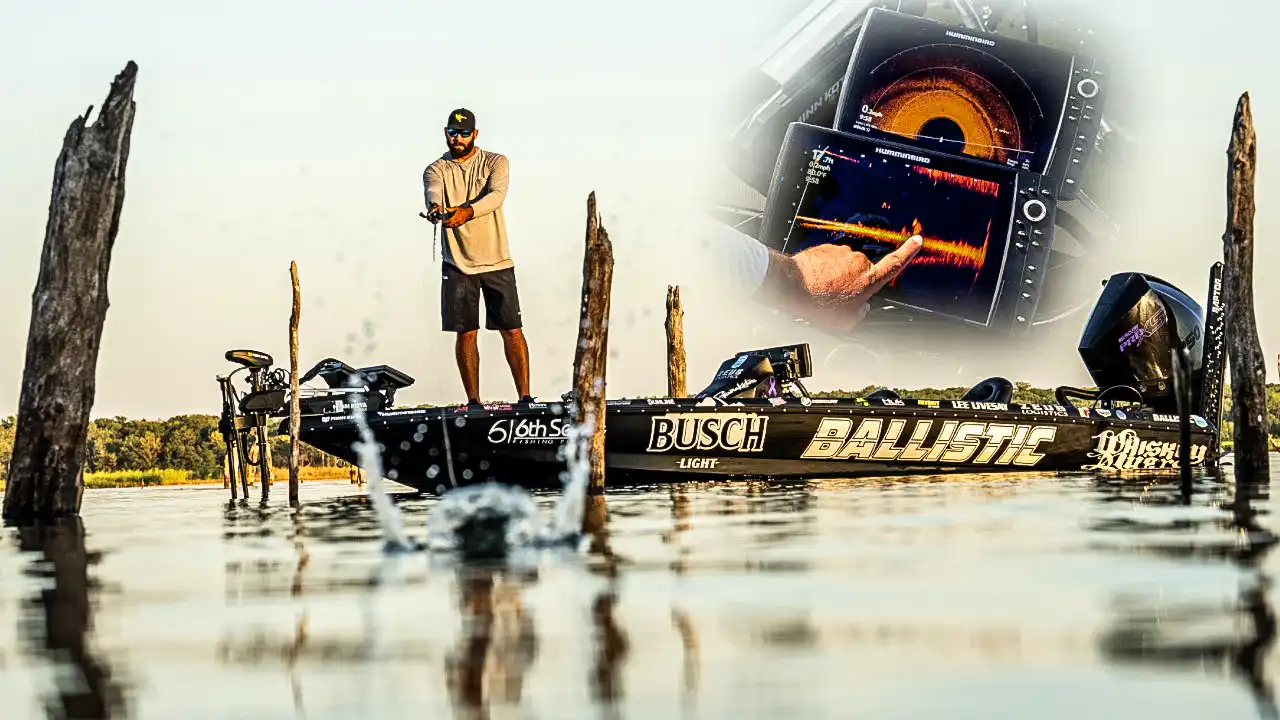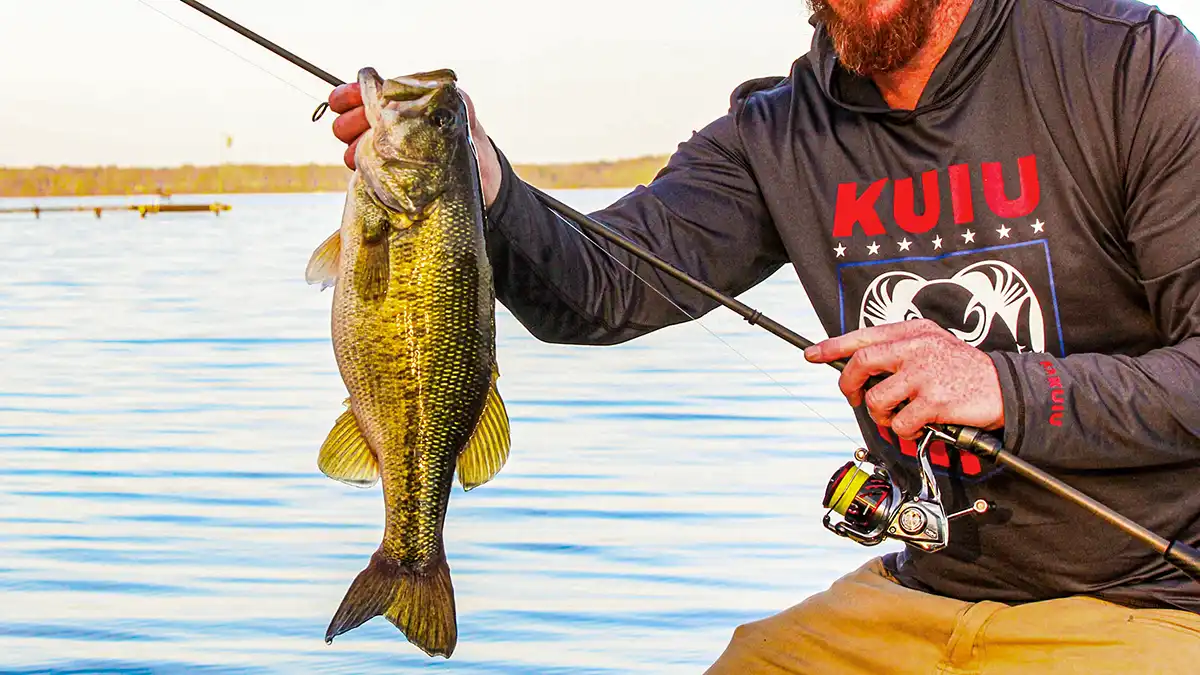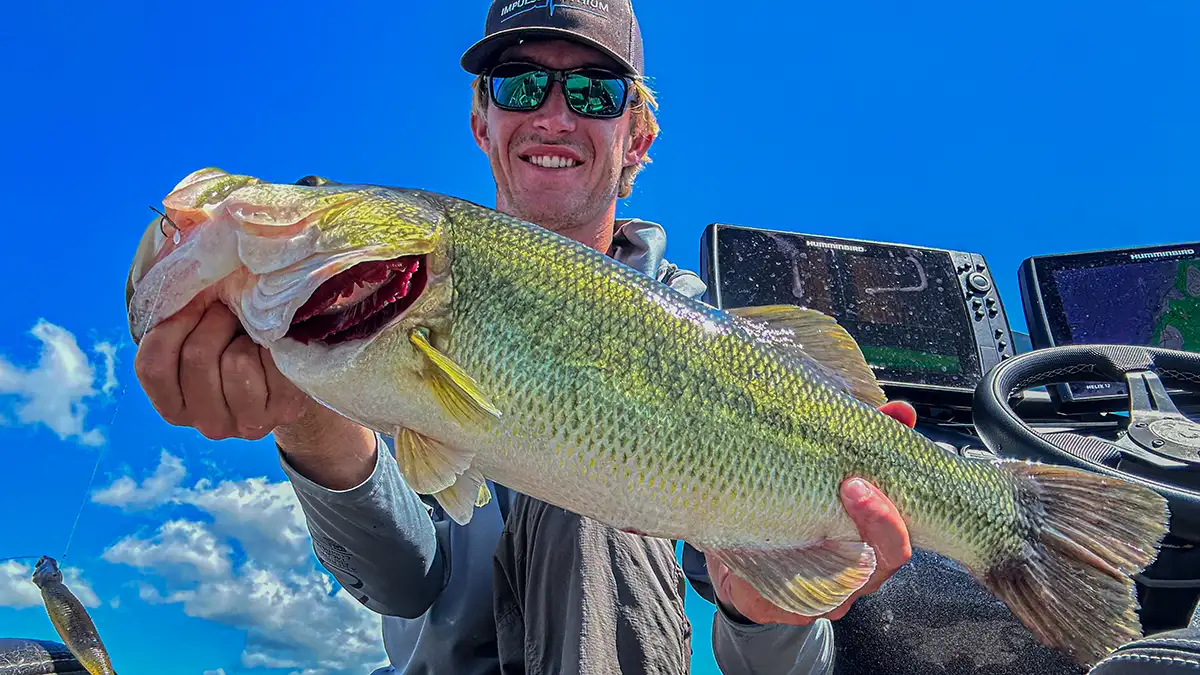It’s a fact the bite gets more challenging when the water stops flowing, but there are still fish to be had. Kyle Welcher gives an insightful tutorial on how to overcome tough conditions by using the flipping and pitching technique. He discusses how bass reposition in slack water and how flipping and pitching can generate more bites than conventional baits.
TACKLE USED (retail links)
- PLASTIC – Rapala CrushCity Bronco Bug, colors – Green Pumpkin & Candy Bug: Buy at Bass Pro Shops, Buy at Tackle Warehouse
- Check out the entire Rapala CrushCity Lineup
- ROD – 13 Fishing Muse Black II Casting Rod, 7’6″ Heavy: Buy at Bass Pro Shops, Buy at Tackle Warehouse
- REEL – 13 Fishing Concept C2 Casting Reel, 8.3:1: Buy a Bass Pro Shops, Buy at Tackle Warehouse
- LINE – Sunline Shooter Fluorocarbon, 22-pound: Buy at Tackle Warehouse
- HOOK – Gamakatsu Heavy Cover Flippin’ Hook, 5/0: Buy at Tackle Warehouse
- PEG – VMC Sinker Stops, Large: Buy at Bass Pro Shops, Buy at Tackle Warehouse
- WEIGHT – Evolution Tungsten Flipping Weight, 1/2-ounce: Buy at Tackle Warehouse
CHOOSING THE RIGHT BAITS
Welcher emphasizes the importance of bait selection in crowded waters, especially when the current is minimal. He introduces one of his new go-to’s, the Rapala CrushCity Bronco Bug, a craw-like creature bait with a distinctive kicking action on the fall. This contrasts with more commonly used flipping, and pitching plastics, highlighting the importance of switching things up to get more bites under pressured conditions.
ADAPTING TO RESERVOIR CONDITIONS
Welcher skillfully fishes a variety of cover types, from isolated wood near creek mouths to root balls and laydowns. He explains how the cover’s relation to lake contours and backwaters influences bass location, stressing the importance of moving water in positioning fish in river systems.
SLOW AND METHODICAL APPROACH
In the absence of significant current, Welcher advises a slower, more meticulous approach. He focuses on isolated targets where fish are likely to hold, using precise casting and allowing the bait to reach the bottom. Pitching around doesn’t mean fishing slowly. Welcher’s technique involves using a single drop and lift before moving on.
THE IDEAL FLIPPING SETUP
Welcher shares his flipping setup: a 7-foot-6 heavy power 13 Fishing Muse Black II rod paired with 22-pound fluorocarbon, balancing strength and subtlety. He explains why this setup is optimal for heavy cover without being overbearing and negatively impacting the bait’s action.
PATTERN RECOGNITION FOR SUCCESS
The video culminates with Welcher identifying a consistent pattern for locating largemouth bass. He highlights how understanding the types of structure and cover bass frequent, combined with a bait you’re confident in, leads to successful flipping and pitching in reservoirs with slack water.
OTHER PRODUCT
- SUNGLASSES – Costa Del Mar Caballito Polarized Sunglasses: Buy at Bass Pro Shops
- SHIRT – Rapala Patch Pullover Green: Buy at Rapala
- HAT – Rapala Mid Pro Cap: Buy at Rapala





